History/driving impressions originally published August 13, 1984
There is no better way to pave one’s own road to the automotive scrapheap of history than to become known as purveyor of obsolescent crocks. Even in eras of high demand and sellers’ market, such as existed after World War II, it ill behooves a manufacturer to become complacent.
In fact, after the war, automakers were struggling to resume production, and in the face of high demand from an auto-starved world, manufacturers could hardly be faulted for merely face lifting or even resuming prewar production unchanged. Jaguar was no different. In fact, the biggest change at Coventry was the name of the company, the prewar title – S.S. – having taken on rather unsavory connotations. The cars, 2.5- and 3.5-liter sedans, were barely changed, continuing with the overhead-valve six and solid front axle of the models from before the war. The sports versions, naturally in a time of austerity, were dropped, though some dropheads were made for export.
Therefore the ‘40s, because of the war, barely qualifies as more than an extension of the ‘30s, and both decades really must be considered almost as one era of automotive design, especially in Great Britain and on the Continent. It can safely be said that 1950 represents a watershed of automotive design, dividing the two preceding decades from the one that followed.
As the new era approached, Jaguar was not to be caught out. Although the Coventry firm was easily able to sell every car it was not so easily (because of limited supplies) able to make, plans were afoot to modernize the line as soon as possible. The first evidence of this appeared in 1948 with the showing of the XK-120 and the Mk V at the Earls Court show, though neither was to become available until the next year.
The Mk V was not revolutionary, as was the XK-120, but rather evolutionary. Produced for three years only, it’s a sort of missing link between the 2.5- and 3.5-liter models (the same car with different engine choices, often but incorrectly referred to as Mk IV – the factory never use the term) and the long running Mk VII-through-Mark IX series, which in truth was one model with altered embellishments.
In inspiration, though, the styling of the Mk V is prewar. True, the headlights are semi-recessed into the fenders, unlike the freestanding headlamps of the earlier cars, but otherwise it is difficult to discern between the Mk V and its predecessors. Differences are there: The earlier cars had louvers in the bonnet sides, the Mk V did not; the steel disk (16-inch) replaced wire wheels; the Mk V’s radiator was moved farther forward. However, similarities between the Mk V and earlier cars exist as well. The sidelight-topped front fenders have the same trouser-like crease and are similarly shaped overall, the suicide doors were retained, and the radiator grill, regardless of location, had not changed. In fact, the total shapes of the two models show more similarity than dissimilarity.
Underneath, however, there were more changes, though similarity/dissimilarity theme continues. The engine and transmission were unaltered: A four-speed manual, syncro except on first, was mated to either a 2663cc or 3485cc undersquare in-line six. The former, with a 73 mm bore produced 102 HP at 4600 RPM, and the latter, with 82 mm by 110 mm, had to go only 4250 RPM for 125 hp. It was a robust engine, with block and head of cast iron, seven main bearings and pushrod operated valves. Twin SU. carburetors (what else), in what can be described only as a design flaw, are located over the distributor, requiring a typically British fix of placing a drip pan in between to prevent fires in a gasoline -soaked distributor.
The chassis, however, was completely new. The Mk V received double A-arms with torsion bar independent front suspension replacing the solid axle on semi-elliptic’s of its predecessor. At the rear, a live axle was used, but instead of underslung like the earlier cars, the Mk V frame arched over the axle for more ground clearance. Unlike the earlier cars, the Mk V was equipped with Girling hydraulic drum brakes.
Up-market from the basic sedan was the drophead coupe. Of the postwar 2.5- and 3.5-liter dropheads, almost all were exported, and the majority of the Mk V dropheads were exported as well. One of the export cars, with this left-hand drive and a 3.5-liter engine, eventually came to the Bowie, Maryland, garage of Bob Parr, and it was this car that AutoWeek recently drove.
The first thing a novice Mk V driver notices upon entering the car – after making sure the door is closed securely (they don’t call them suicide for nothing) – is a large, black, classically Jaguar steering wheel. Then there is the wood, fine as cabinetry, and there should be the smell of leather. The previous owner switched to vinyl, but Parr says it shall be leather again. The fabric drophead top has a small dome light over the rear seat and is fully padded and lined with soft felt. On the dash, the large tachometer and speedometer flank lesser gauges and ignition key and starter button. The starting routine should be familiar to the early Brit car owner: Turn the ignition and wait ‘til the electric fuel pump stops ticking, then push the starter button. With Lucas’ finest doing its stuff, the six settles into a long stroke idle.
The gearshift is floor-mounted and short, requiring a long stretch, especially for the long throws into first and third. It is almost as if the builders wished to discourage shifting, as it isn’t all that necessary. The torquey six pulls from idle in high without shudder or complaint, and it’s never necessary to double clutch down into first, as second will do for the slowest of slow-speed corners. The dedicated non-shifter, in fact, could start in second with no ill effect.
The view to the front is magnificent, looking down the long, tapering hood and flowing fenders and over the back of the leaping cat. To the rear, vision is extremely limited, with the choice of fender-mounted mirrors or an almost useless dash-mounted mirror positioned totally wrong for the tiny rear window.
The Mk V has been called the worst-handling Jaguar made, but tossing the five-foot-tall, 3,300-pound car about is not what it was made for. Driven as intended, no peculiar traits were noted. Anyway, for what it’s worth, a Mk V sedan placed third overall in the 1951 Monte Carlo Rally. It was Jaguar’s best finish to date in that event, which either disproves the bad handling theory or says great things about the driver, Irishman Cecil Vard.
Still, the car has a low thrill factor. Its rev-resistant engine and high profile see to that. Rather, the Mk V is for feeling rich. One can gather the front half of the top back to the rear edge of the door and cruise in regal, open-air splendor. Or, if the weather turns to rain, as it did quite heavily on us, be quite secure inside with the roof closed. The top goes all the way down, but that would fold up those marvelous and functional landau irons.
Jaguar’s intention for the car as a tourer shows in the luggage provisions. Though the trunk, er, boot is actually quite small, the trunk, uh, boot lid (which is very heavy and contains a complete toolkit) has special locking nuts to keep it in place when opened and brackets for trunk (as in luggage) straps.
Another case of looking back to the past, that matter of carrying luggage outside the car. Another sample of having one foot in the past and one in the future. The Mk V was success for Jaguar, with 10,500 produced during its three years of manufacture. Of these, 2,150 were drophead coupes, of which only 550 came to the US, the others remaining in the UK or destined for Europe.
Jaguar’s transition into the ‘50s was made by the Mk V’s successor the Mk VII, with styling yet more modern and mechanical features including disc brakes and the double-overhead-cam engine. The Mk V remains, however, of the elegance that was passed and the elegance that was yet to be.










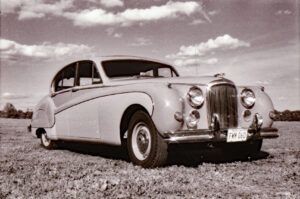
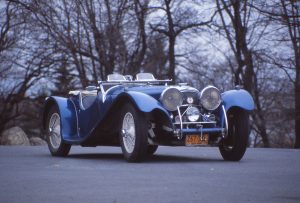
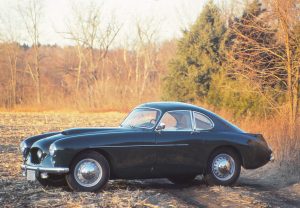
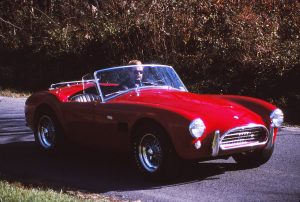
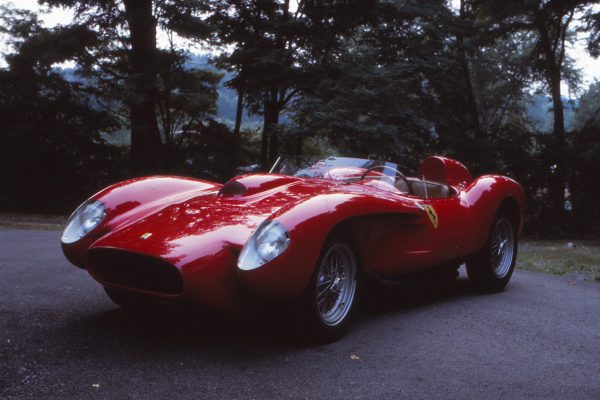
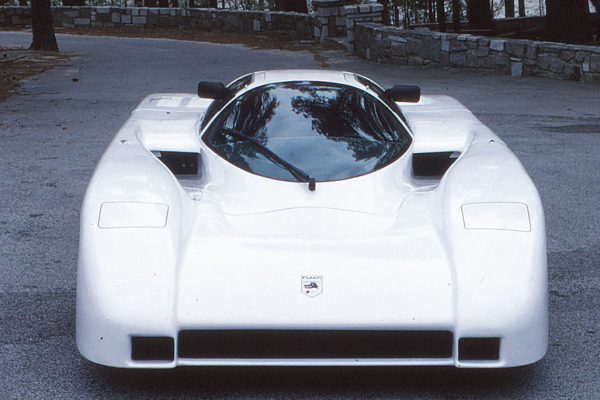
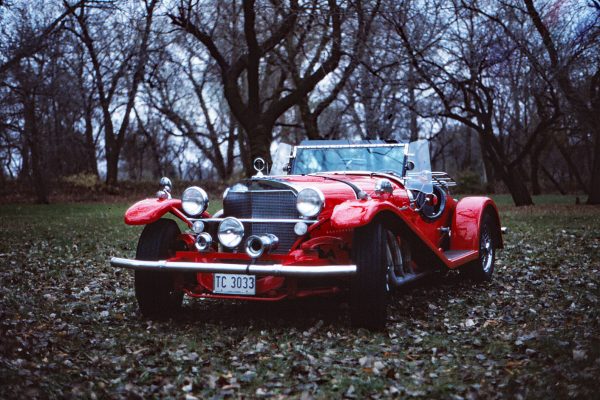
What Do You Think?
You must be logged in to post a comment.